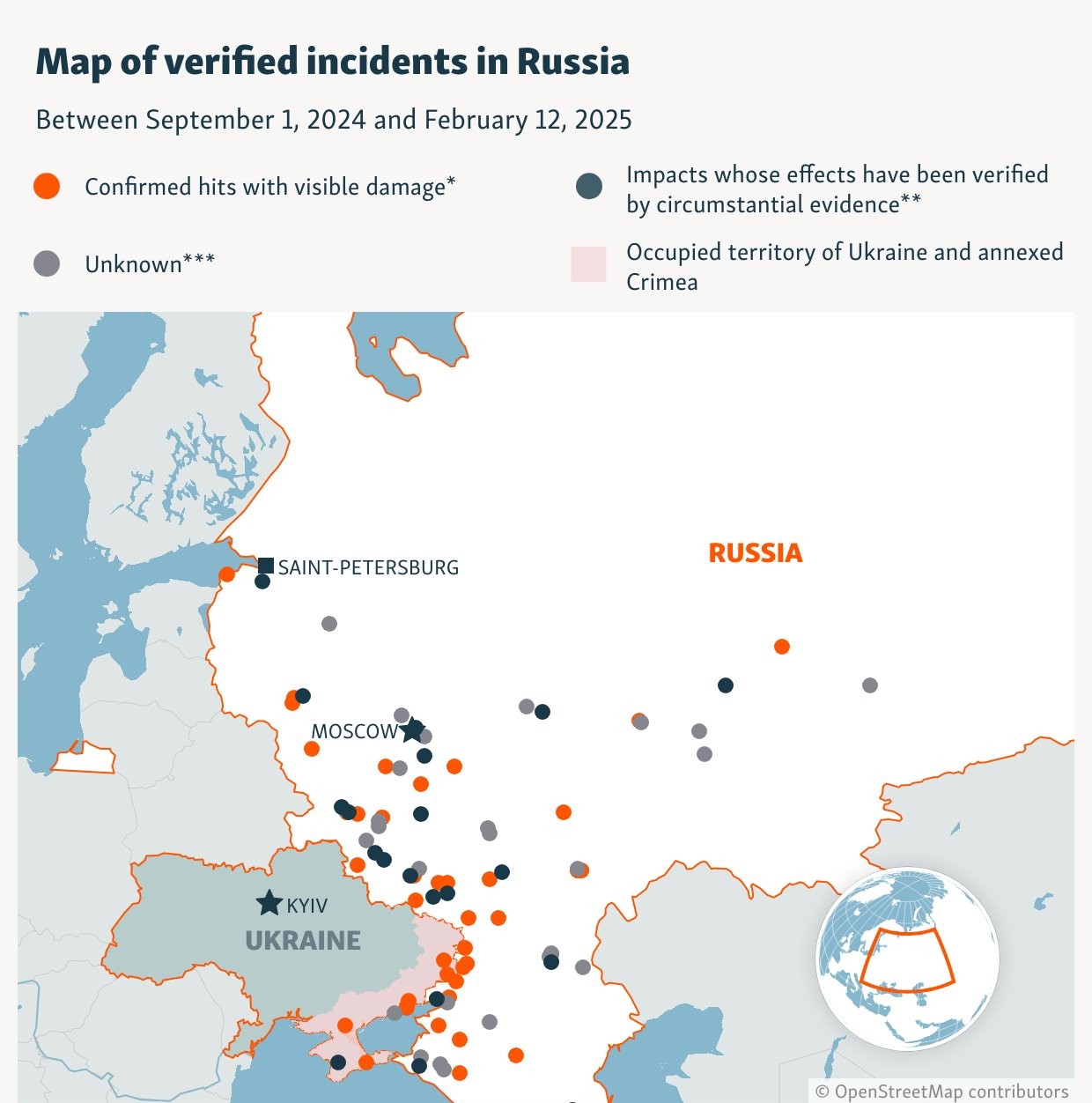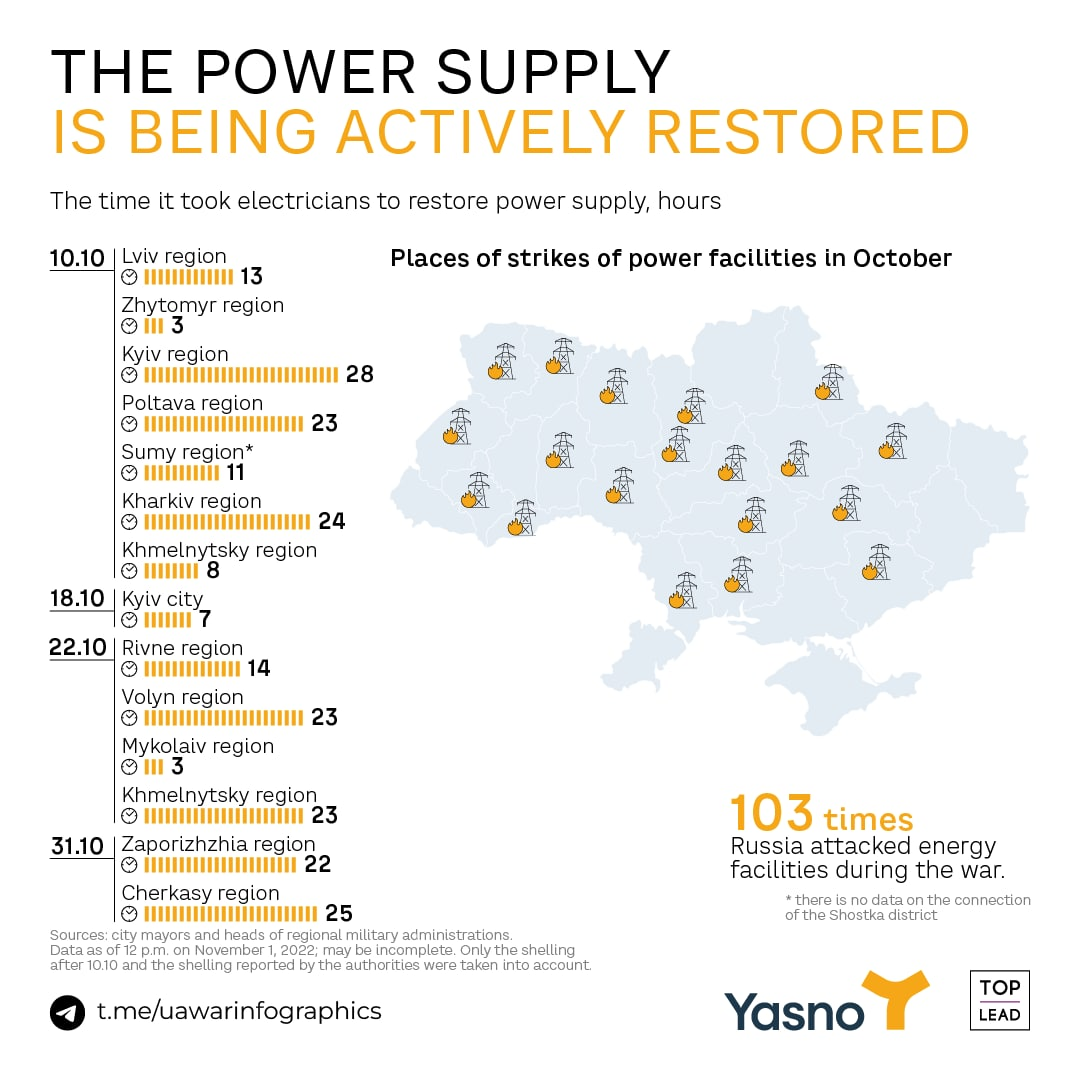Ukrainian drone and missile strikes on Russian energy infrastructure caused at least 60 billion rubles ($658 million) in damages over a six-month period, according to an investigation by Radio Liberty, Ukrainian project Frontelligence Insight, and volunteer analysts.
Ukrainian forces have increased operations targeting Russia’s oil infrastructure, ammunition storage facilities, and military airfields. These strikes aim to disrupt supply chains supporting Russia’s war efforts, as fossil fuel exports remain a crucial revenue source for Moscow’s military operations.
The assessment, based on analysis of more than 100 satellite images, covers the period from 1 September 2024, to 12 February 2025. The investigation found that dozens of Russian military facilities were also damaged or destroyed during this timeframe.
"At least 67 percent of Ukrainian strikes were successful," according to the report. "In other cases, the result of the attacks remains unknown, or it is impossible to prove Ukraine's involvement."
Researchers found that Ukrainian forces destroyed 50 oil storage tanks and damaged another 47 during the six-month period. The heaviest single strike occurred on 7 October in Russia-occupied Crimea, where 11 tanks with a total capacity of 69,000 cubic meters were destroyed in Feodosia.
The maximum damage from this strike, including the cost of oil and rebuilding tanks, could exceed $37.5 million or 3.3 billion rubles ($39 mn), according to Radio Liberty's calculations.
The investigation found that at the beginning of the period Ukrainian strikes more often hit military facilities, mostly ammunition depots. Then the vector gradually shifted to oil or gas storage facilities, as well as oil and gas processing plants. By January, "two-thirds of all verified strikes were aimed at these targets," the report stated.
Tatarigami_UA, a military analyst and founder of Frontelligence Insight, reported that most Ukrainian strikes focus on targets within 650 kilometers of the border.
"The greater the distance a drone needs to travel, the more likely it will be shot down, as it will encounter more air defense systems along its way," the analyst noted. "Nevertheless, within a 650-kilometer radius from the Ukrainian border, there are still many targets of interest to the Ukrainian Armed Forces."
The investigation found that strikes on specialized equipment at refineries might be particularly damaging. In one case, a 3 February attack on the Astrakhan gas processing plant damaged a stable gas condensate processing unit that produces gasoline, diesel fuel, and fuel oil, as well as being involved in the production of gas sulfur.
The Astrakhan plant could lose 20.5-40 billion rubles ($228.3-456.6 million) if it continues operating with a non-functioning gas condensate unit for 3-6 months.
Vladimir Milov, a Russian economist cited in the investigation, said that the strikes have affected Russia's production of high-octane gasoline, as the equipment that produces it is difficult to repair - "it is unique equipment manufactured by UOP or BASF, their products have no analogues in either Russia or China."
According to Milov, the damage to high-octane gasoline production can be seen in the price increase for premium AI-98 gasoline, which reached almost 84 rubles per liter by the end of February 2025 - 22% higher than at the beginning of 2024.
However, according to the report, the damage so far represents only "about half a percent of Russia's total income from oil exports in 2024," which was estimated at $189 billion by the International Energy Agency.
Will Thill, a chemical engineer with 32 years of experience in oil and gas processing, exploration, and production, told Radio Liberty that Ukrainian strikes might be particularly effective against Russia's economy.
"Ukrainian strikes on Russian energy infrastructure are much more effective than Russian attacks on Ukraine's energy supply infrastructure," Thill said. "The money flow from oil is Russia's king, and we see that attacks on refineries, oil transfer stations, and gas and crude oil pumping and export hubs worked from a financial perspective."
Read also:
- Russian drones hit Zelenskyy’s hometown in “most massive strike on city since war began
- CIA Director says Ukrainian people and army are underestimated, as they ready to “fight with their bare hands”
- HUR: Russia outlines 15 potential military conflict scenarios targeting Northern Europe




